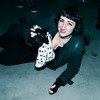Image: Wikipedia
Advertisement
Chuck Hull, inventor of the 3D printer, receiving his award. Image: author
Chuck Hull: I had a job at a big company but then I went to a small company. At the small company, I saw we were using ultraviolet lamps to cure thin layers of curable plastic, like tabletop coverings, floor coverings, and things. I thought “Ah, this curable plastic, maybe I could take thin layers and stack it up to being 3D parts.” That’s where the idea came from. I set up a lamp at the back and just started working on it.You’ve been working on 3D printing for over 15 years. Can you let us know about your process?
To start with, there’s lots of engineering and science and technology behind 3D printing, especially the material science. Beyond that, all the software engineering to drive the machine is a huge.
Did you make less money at the small company than the big company?
When I decided to be an inventor you have no money, just faith.Not anymore. What do you think about 3D-printed food, will it ever take off?
Absolutely. We have in California the Sugar Lab, that’s a place where chefs can come and learn about printing food and give us their ideas and so forth. We’re introducing two new food printers later this year on the market.Will it ever actually reach retail so it's commonplace in the mainstream?
We have a joint venture with the Hershey Corporation for studies of candies, but we’re looking at other foods. Our long-term goal is personalized nutrition so that your senses or your body or your computer knows what you need and prints your meals that will be nutritious and broadcast.What do you think of the more controversial 3D-printed goods like 3D-printed guns?
Every technology has its controversial directions. First, I think that’s not the best way to make a gun. I hope nobody gets hurt doing it.What will you think of next?
Almost everything I do nowadays is always around 3D printing because there’s so many different things you can do with it. A lot of my focus now is on production—higher speed, better materials.Where are you putting your award?
I haven’t decided yet, I just got it. But I’ve already made a 3D-printed version of it. We got the template and made it in California. In fact, I have many. I have them in black, red, white…
